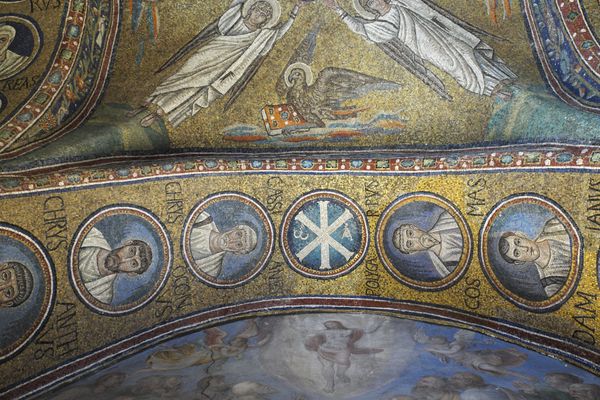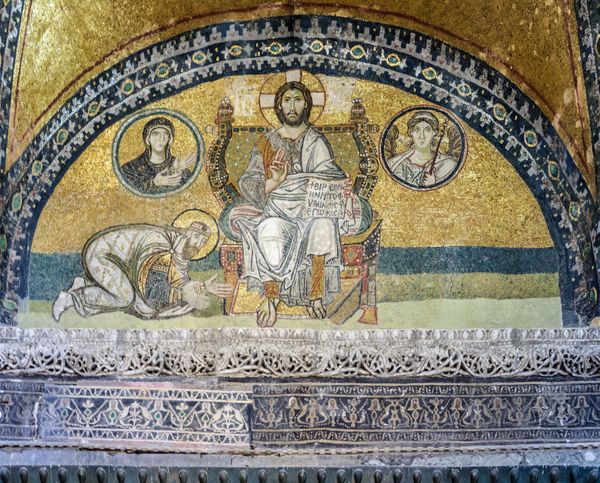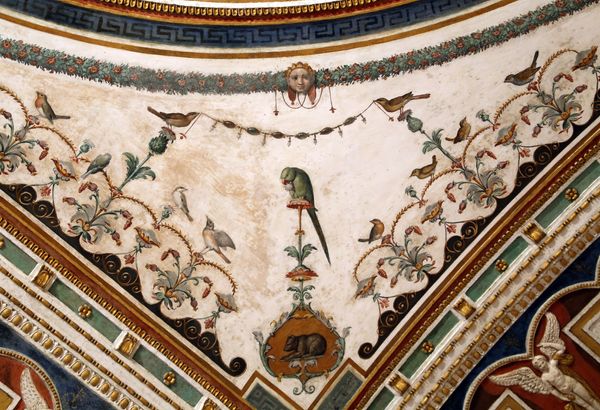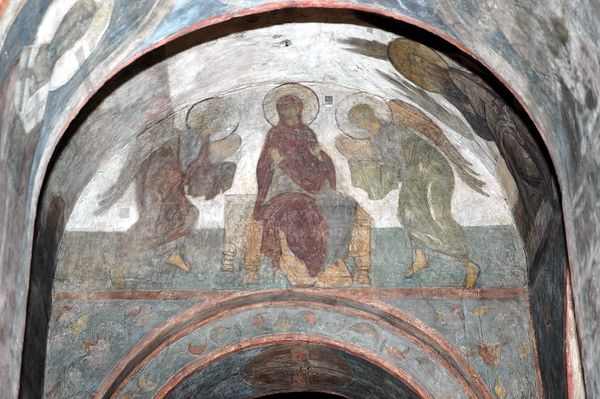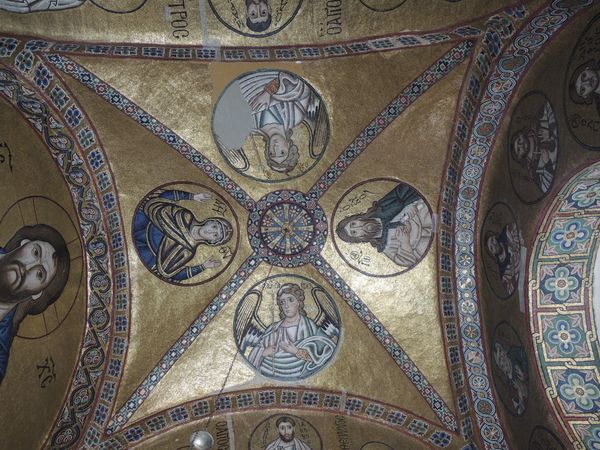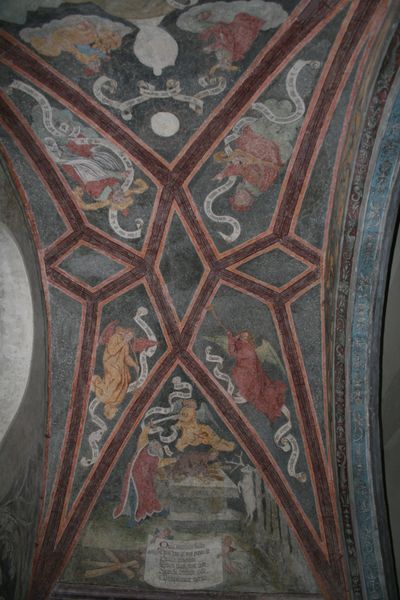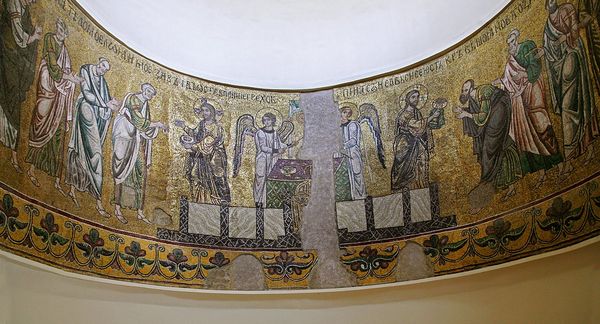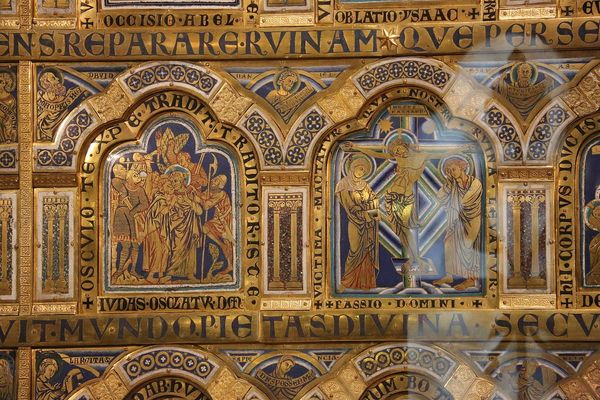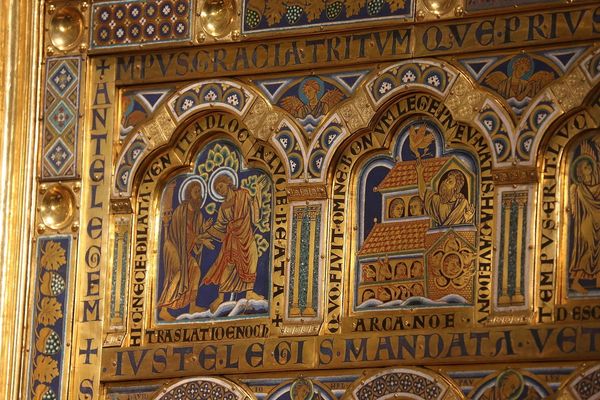
Mosaic of the Hospitality and Sacrifice of Abraham 547
0:00
0:00
byzantinemosaics
Basilica of San Vitale, Ravenna, Italy
mosaic, carving, fresco, architecture
#
mosaic
#
byzantine-art
#
carving
#
holy-places
#
figuration
#
historic architecture
#
fresco
#
history-painting
#
architecture
Copyright: Public domain
Curator: Here we see the "Mosaic of the Hospitality and Sacrifice of Abraham," a stunning example of Byzantine artistry dating back to 547 CE, housed in the Basilica of San Vitale in Ravenna, Italy. Editor: It’s breathtaking. The whole composition, rendered in these tiny tesserae, possesses an otherworldly luminescence, almost like a scene playing out behind glass. But also… violent, strangely. Curator: In what sense? This mosaic provides a compelling window into the material conditions of early Christian art. Consider the labor involved in its creation—each tessera meticulously crafted and placed. This speaks to the incredible resources the Church was able to command at the time, leveraging skill and devotion into a powerful visual statement. Editor: Absolutely, but that violence isn't only represented in the proposed slaughter of Isaac, is it? Think about the inherent power dynamics, the patriarchal structures informing the very narrative depicted, the suppression of female voices epitomized by Sarah remaining within the domestic space of the building. These aren’t passive representations; they’re endorsements of a specific socio-political order. Curator: Perhaps, but it’s essential to see this within its original architectural context. The positioning and gleam of the gold work as well, it emphasizes how art can be used to shape beliefs and enforce social hierarchies. Consider too how the Byzantine aesthetic blends Roman traditions of portraiture with the flattened perspective—the artist uses this stylistic feature to emphasize spiritual significance. Editor: Agreed. Byzantine art often portrays a rigid, unchanging cosmic order and uses artistic license to cement hierarchical positions. Take, for instance, the figure of Abraham sacrificing the lamb—this mirrors his willingness to sacrifice Isaac to God. It underlines how stories become cultural norms; thus, power becomes intertwined in every glittering tile of this historical setting. Curator: Indeed, by reflecting on the methods employed to construct meaning, both artistically and architecturally, it also challenges these ideas too—ultimately enriching our appreciation of not just religious faith but its manipulation through skilled labor and precious materials. Editor: Exactly! And seeing how the raw, brutal foundations of identity and political dominance were then manifested aesthetically pushes me to really reflect on this display of sacrifice, not only on the proposed violent act, but within broader questions regarding identity and justice in our contemporary times. It serves as a constant reminder for both caution and deep interrogation.
Comments
No comments
Be the first to comment and join the conversation on the ultimate creative platform.
